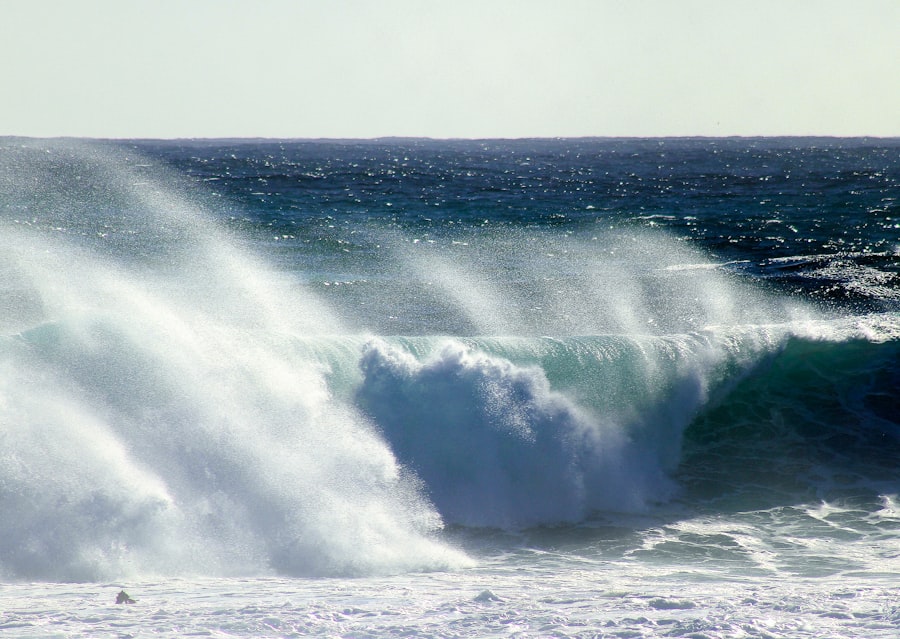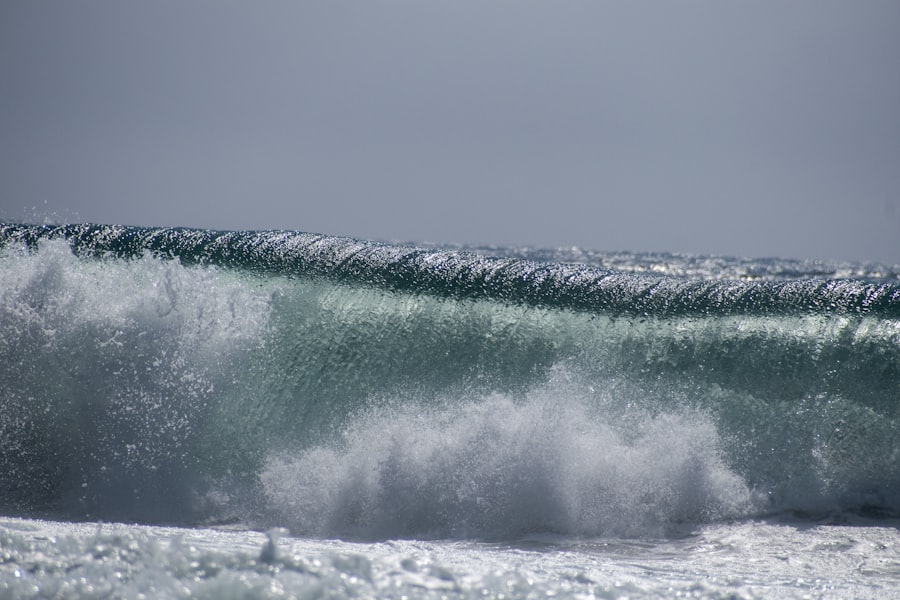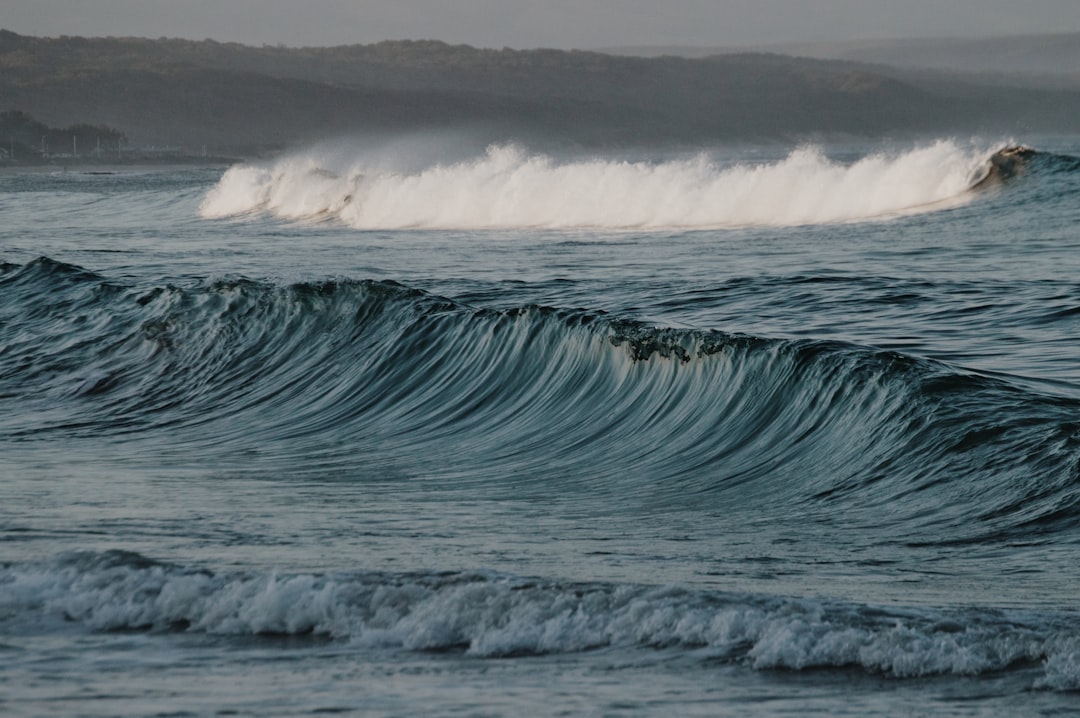The Drake Passage, a body of water located between the southern tip of South America and Antarctica, is renowned for its tumultuous seas and unpredictable weather patterns. This narrow stretch of ocean, measuring approximately 800 kilometers (500 miles) wide, serves as a critical conduit for maritime traffic between the Atlantic and Pacific Oceans. The passage is named after the English explorer Sir Francis Drake, who navigated these waters in the late 16th century.
Its significance extends beyond mere geography; it plays a vital role in global oceanic circulation and climate regulation. Navigating the Drake Passage is often considered one of the most challenging maritime endeavors due to its notorious waves and fierce winds. The region is characterized by a unique confluence of ocean currents, including the Antarctic Circumpolar Current, which contributes to the formation of large swells and unpredictable weather conditions.
As such, understanding the dynamics of wave formation and forecasting in this area is essential for safe navigation and maritime operations. The Drake Passage not only poses challenges for vessels traversing its waters but also serves as a critical area for scientific research and exploration, particularly in the context of climate change and marine ecosystems.
Key Takeaways
- The Drake Passage is a narrow stretch of water between South America’s Cape Horn and the South Shetland Islands of Antarctica, known for its challenging maritime conditions.
- Accurate wave forecasting in the Drake Passage is crucial for the safety and efficiency of shipping and navigation in the region.
- Factors such as wind speed, ocean currents, and the presence of icebergs can significantly impact wave formation in the Drake Passage.
- Methods like satellite data, numerical models, and historical wave data are used for wave forecasting in the Drake Passage.
- The 10-day wave forecasting in the Drake Passage provides valuable insights for planning shipping routes and conducting research and exploration activities in the region.
Importance of Wave Forecasting in the Drake Passage
Wave forecasting in the Drake Passage is of paramount importance for various stakeholders, including commercial shipping companies, research vessels, and recreational sailors. Accurate wave forecasts enable mariners to make informed decisions about their routes, ensuring safety and efficiency during transit. Given the passage’s reputation for sudden weather changes and high seas, having reliable forecasts can mean the difference between a successful voyage and a perilous situation at sea.
Moreover, wave forecasting is not solely about immediate navigation concerns; it also has broader implications for environmental monitoring and scientific research. Researchers studying marine ecosystems rely on wave forecasts to plan their expeditions effectively. Understanding wave patterns can help scientists assess the impact of climate change on oceanic conditions and marine life.
Thus, wave forecasting serves as a critical tool that supports both maritime safety and scientific inquiry in this unique and challenging environment.
Factors Affecting Wave Formation in the Drake Passage

Several factors contribute to wave formation in the Drake Passage, making it a complex and dynamic marine environment. One of the primary influences is wind speed and direction. The passage experiences strong winds that can generate large waves, particularly during storms.
The interaction between these winds and the ocean surface creates waves that can reach significant heights, especially when sustained over long distances. Another critical factor is the geography of the region itself. The narrowness of the passage funnels ocean currents, intensifying wave action as water is forced through this constricted space.
Additionally, the presence of underwater topography, such as ridges and valleys on the ocean floor, can further influence wave behavior. These geological features can cause waves to refract or reflect, leading to unpredictable conditions that challenge even experienced mariners.
Methods Used for Wave Forecasting in the Drake Passage
| Method | Description |
|---|---|
| Empirical Methods | Based on historical wave data and statistical analysis to forecast future wave conditions. |
| Numerical Wave Models | Using mathematical equations to simulate wave behavior and predict wave conditions. |
| Remote Sensing | Utilizing satellite or radar technology to gather real-time wave data for forecasting. |
| Expert Judgment | Experienced forecasters analyze various factors to make informed predictions about wave conditions. |
Wave forecasting in the Drake Passage employs a combination of observational data, numerical models, and satellite technology to provide accurate predictions. Meteorological buoys strategically placed throughout the passage collect real-time data on wave height, period, and direction. This information is crucial for understanding current conditions and informing forecasts.
Numerical weather prediction models also play a significant role in wave forecasting. These models simulate atmospheric conditions and ocean dynamics to predict wave behavior over time. By integrating data from various sources, including satellite imagery and historical weather patterns, forecasters can generate detailed wave forecasts that account for changing conditions in the Drake Passage.
This multi-faceted approach ensures that predictions are as accurate as possible, providing mariners with essential information for safe navigation.
10-Day Wave Forecasting in the Drake Passage
The 10-day wave forecast for the Drake Passage is a vital tool for mariners planning their journeys through this challenging waterway. This extended forecast provides insights into expected wave heights, periods, and directions over a week-and-a-half timeframe, allowing vessels to prepare adequately for upcoming conditions. Given the unpredictable nature of the passage, having access to such forecasts can significantly enhance safety and operational efficiency.
The 10-day forecast is generated using advanced numerical models that analyze current meteorological data and historical trends. By projecting future weather patterns and oceanic conditions, forecasters can offer valuable insights into potential hazards that may arise during a vessel’s transit. This foresight enables shipping companies to adjust their schedules or routes accordingly, minimizing risks associated with high waves or severe weather.
Understanding the 10-Day Wave Outlook

Understanding the 10-day wave outlook involves interpreting various elements that contribute to wave behavior in the Drake Passage. Key components include wave height, which indicates the vertical distance between wave crests and troughs; wave period, which measures the time between successive waves; and wave direction, which indicates where waves are coming from. Together, these factors provide a comprehensive picture of what mariners can expect during their journey.
For instance, a forecast indicating high wave heights combined with short wave periods may suggest choppy seas that could pose challenges for navigation. Conversely, longer wave periods may indicate more organized swells that are easier to navigate despite their height. By analyzing these elements within the context of prevailing weather conditions, mariners can make informed decisions about their routes and timing, ultimately enhancing safety during their passage through this treacherous region.
Implications of the Wave Forecast for Shipping and Navigation
The implications of wave forecasts for shipping and navigation in the Drake Passage are profound. For commercial shipping companies, accurate forecasts can lead to significant cost savings by optimizing routes and schedules based on expected sea conditions. Avoiding rough seas not only enhances safety but also reduces fuel consumption and wear on vessels, contributing to more sustainable maritime operations.
Additionally, recreational sailors benefit from wave forecasts by gaining insights into when it may be safe to embark on voyages or engage in water activities. Understanding potential hazards allows them to plan their trips more effectively, ensuring they are well-prepared for any challenges they may encounter at sea. Overall, reliable wave forecasting serves as an essential resource for all who navigate these waters, fostering safer maritime practices while promoting efficient operations.
Impact of Wave Forecast on Research and Exploration in the Drake Passage
Wave forecasts significantly impact research and exploration efforts in the Drake Passage by enabling scientists to plan their expeditions with greater precision. Researchers studying marine ecosystems or conducting climate-related studies rely on accurate forecasts to determine optimal times for data collection or sample gathering. By aligning their activities with favorable sea conditions, scientists can maximize their productivity while minimizing risks associated with adverse weather.
Furthermore, understanding wave patterns aids researchers in assessing how changing oceanic conditions may affect marine life in this unique environment. For instance, fluctuations in wave height can influence nutrient distribution and habitat availability for various species. By incorporating wave forecasts into their research methodologies, scientists can gain deeper insights into the intricate relationships between ocean dynamics and marine ecosystems in the Drake Passage.
Safety Measures and Precautions Based on the Wave Forecast
Safety measures and precautions based on wave forecasts are crucial for ensuring safe navigation through the Drake Passage. Mariners are encouraged to closely monitor updated forecasts before embarking on their journeys and throughout their transit. This vigilance allows them to adjust their plans as necessary in response to changing conditions.
In addition to monitoring forecasts, vessels should be equipped with appropriate safety gear and communication systems to respond effectively to emergencies that may arise due to unexpected weather changes or high seas. Crew training on handling rough conditions is also essential; understanding how to navigate safely through turbulent waters can significantly reduce risks associated with maritime travel in this challenging region.
Historical Data and Trends in Wave Patterns in the Drake Passage
Historical data on wave patterns in the Drake Passage reveals significant trends that inform current forecasting practices. Over time, researchers have compiled extensive records detailing wave heights, frequencies, and seasonal variations within this body of water. Analyzing this data allows forecasters to identify patterns that may indicate shifts in oceanic behavior due to climate change or other environmental factors.
For instance, studies have shown that extreme weather events have become more frequent in recent years, leading to increased wave heights during certain seasons. Understanding these trends helps forecasters refine their models and improve prediction accuracy while providing valuable insights into how changing climate conditions may impact future maritime operations in the passage.
Future Developments in Wave Forecasting for the Drake Passage
The future of wave forecasting in the Drake Passage holds promise as advancements in technology continue to enhance predictive capabilities. Innovations such as improved satellite imagery and machine learning algorithms are expected to revolutionize how forecasters analyze data and generate predictions. These developments will likely lead to more accurate short-term forecasts while also improving long-term projections related to climate change impacts on ocean dynamics.
Moreover, increased collaboration between meteorological agencies and research institutions will facilitate data sharing and enhance forecasting models’ robustness.
In conclusion, navigating the Drake Passage presents unique challenges due to its unpredictable waves and weather patterns.
However, advancements in wave forecasting methods have significantly improved safety for mariners while supporting scientific research efforts in this critical region.
For those planning a journey through the Drake Passage, staying informed about the wave forecast is crucial for a safe and smooth voyage. A related article that provides insights into the current and upcoming weather conditions in this notoriously challenging maritime route can be found on MyGeoQuest. This resource offers valuable information for mariners and adventurers alike, helping them prepare for the conditions they might face. To read more about the Drake Passage wave forecast for the next 10 days, you can visit the article by clicking on this link: Drake Passage Wave Forecast.
WATCH NOW! Drake Passage: Earth’s Deadliest Waters Revealed
FAQs
What is the Drake Passage?
The Drake Passage is the body of water between the southern tip of South America and the northern tip of the Antarctic Peninsula. It is known for its rough seas and challenging sailing conditions.
What is a wave forecast?
A wave forecast is a prediction of the height, direction, and period of ocean waves over a specific period of time. It is used by sailors, surfers, and other marine activities to plan and prepare for the conditions they will encounter.
How accurate are 10-day wave forecasts for the Drake Passage?
Wave forecasts, especially for longer time periods like 10 days, are inherently less accurate than shorter-term forecasts. They are useful for providing a general idea of the expected wave conditions, but should be used with caution and updated regularly as the forecast period gets closer.
What factors are considered in creating a wave forecast for the Drake Passage?
Wave forecasts take into account a variety of factors including wind speed and direction, atmospheric pressure, ocean currents, and the shape of the ocean floor. These factors all contribute to the formation and movement of waves in the area.
Where can I find a 10-day wave forecast for the Drake Passage?
There are several websites and marine forecasting services that provide wave forecasts for the Drake Passage. These can be accessed online and often include detailed information about wave height, direction, and period for the 10-day forecast period.
